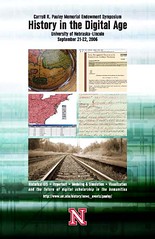Clive Owen makes a splendid Roman officer, don't you think?
Last week, I watched King Arthur again. Now, I would be the first to admit that there's precious little historical fact in that movie. But I do appreciate a rip-roaring action movie, competently acted and well directed.
Imagine my surprise when I found that some people believe King Arthur to be less of a movie and more of a documentary. In particular, a certain Dr. Linda Malcor (her Doctorate is in folklore and mythology) has posted an on-line article on why she believes that a second-century Roman officer named Lucius Artorius Castus is really the King Arthur of legend.
The most glaring problem would appear to be chronology: for the historical Arthur is mentioned in the later 5th century, whereas the Roman Artorius lived 300 years earlier. This is the least of the movie's historical problems. Others have provided detailed criticism, but it was Dr. Malcor's misrepresentation of Artorius's career ("... a brilliant cavalry officer" !) that I found striking.
A Roman inscription that seems to be the tombstone of Artorius Castus was published in 1873 (as CIL III 1919) by the great German scholar Theodor Mommsen. Thought to date from the AD 180s, it reads as follows:
D(is) [M(anibus)]
L(ucius) ARTORI[us Ca?]STUS
(centurio) LEG(ionis)
III GALLICAE ITEM
[(centurio) le]G(ionis) VI FERRA-
TAE ITEM
(centurio) LEG(ionis) II ADI(utricis) [i]TEM
(centurio) LEG(ionis) V M[a]-
C(edonicae) ITEM P(rimus)P(ilus) EIUSDEM PRAEPOSITO
CLASSIS MISENATIUM [pr]AEF(ectus) LEG(ionis) VI
VICTRICIS DUCI(!) LEGG(ionum) [alaru]M BRITAN(n)IC{I}-
{MI}ARUM ADVERSUS ARM[oricano]S PROC(urator) CENTE-
NARIO(!) PROVINCIAE LI[burniae iure] GLADI(i) VI-
VUS IPSE SIBI ET SUIS [ex te]STAMENTO
The man was clearly a career centurion, one of these courageous, highly paid officers (each one in charge of 80 men) who moved from unit to unit (legion III Gallica, legion VI Ferrata, legion II Adiutrix, legion V Macedonica) until finally attaining the coveted position of primus pilus, the chief centurion of a legion. In that post, he had the regiment's 59 other centurions under his authority, and was one of the legionary commander's closest advisors. A secondment as praepositus classis Misenatium (commander of the fleet at Misenum) occurs at this point. But the next step in the ambitious centurion's career was the post of praefectus castrorum (gradually becoming known as praefectus legionis, "prefect of the legion"), which recognised the man's years of experience by charging him with the smooth running of the legionary fortress for a year before his honorable discharge. At this point in Artorius's career, he was entrusted with the command of an army drawn from the legions and cavalry of Britain, in an expedition against the Armoricans of northern France. (His temporary command gave him the grand title of Dux legionum et alarum Britannicarum.) This was a perfectly standard assignment for a man of his seniority, to command detached troops in a war zone; we find numerous examples of chief centurions and legionary prefects in the same role.
As an ex-chief centurion, Artorius had earned the status of a primipilaris, and thus qualified for entry into Rome's equestrian order, a level of nobility second only to the senators themselves. Equestrian status gave Artorius access to the well-paid procuratorships. The inscription proudly announces that he was procurator centenarius (meaning "with a salary of 100,000 sesterces") of Liburnia in Illyricum (modern Croatia), where the inscription was discovered. Many procurators were simply finance officers, assisting the regular military governors (who, as senators, outranked them on the social scale). But Artorius tells us that he had "the right of the sword" (ius gladii), meaning that he had ultimate jurisdiction over Roman citizens, so he was clearly governing the region of Liburnia. This was Artorius's crowning achievement, after which he no doubt retired.
Beyond his prolonged career as a centurion -- which may well have been fraught with danger if it occurred during the lengthy wars of Marcus Aurelius (although the inscription is not precisely dated) -- there is no particular sign of derring-do here. No knights of the round table, Sarmatian or otherwise. And no expeditions against Britain's enemies. No sign, in fact, that Lucius Artorius Castus was King Arthur.
